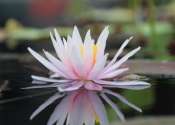New test measures corn nitrogen needs with greater accuracy
The soil fertility tests farmers have used for decades to measure nitrogen levels don't account for the vast majority of the nitrogen in soils, so Iowa State University scientists helped develop a new test that yields more ...









